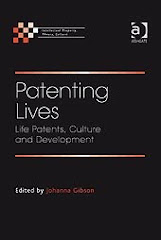The project was first devised around 3 years ago by project lead, T V Prabhakar. Prabhakar, of the Indian Institute of Technology in Kanpur, saw a need for the equivalent of Wikipedia to be created for global agriculture. The project was revised to focus on information specific to India.
The 85 million rupee project will be implemented over 30 months to provide on-line access to agricultural information and knowledge throughout the country. Funded by the Indian government (the National Agriculture Innovation Project (NAIP)) and World Bank, resources will include information on crops and practices, regional knowledge and relevant research. Its primary objective is to provide an effective dissemination mechanism not only for researchers and students, but also farmers and agricultural extension workers.
The website launched with information on 9 crops - rice, wheat, sugarcane, lychee, groundnut, sorghum, chickpea, vegetable pea and pigeon pea - but the objective is to expand the resource so as to include all information related to agriculture and agricultural practice.
In true wiki-style, Agropedia is a dynamic resource to which content is constantly added and reviewed. Agricultural researchers are invited to validate information through the "open source" wiki model, but additional review will no doubt emerge through user feedback and contributions. Blogs and user forum facilities enhance and broaden the kind of knowledge provided and exchanged through the project.

The 7 consortium partners in the project include the International Crop Research Institute for the Semi-Arid Tropics (ICRISAT); Indian Institute of Technology, Kanpur (IITK); Indian Institute of Technology, Bombay (IITB); G B Pant University of Agriculture and Technology (GBPUAT); Indian Institute of Information Technology and Management, Kerala (IIITM-K); National Academy of Agricultural Research Management (NAARM); and the University of Agricultural Sciences, Dharwad (UASD).
The first stage of the project involved refining the mechanism to manage the knowledge, with the next phase to concentrate on dissemination, with trials to commence in 6 locations around the country.
Dissemination is not a straightforward exercise. While access to the necessary communication technology may be difficult for some, the resource will nevertheless improve the infrastructure to deliver information to all farmers. With the cooperation of agricultural extension workers and the establishment of around 12000 information technology-enabled rural information centres, the introduction of Agropedia should improve the accessibility of agricultural information whether directly or through farming networks. Innovative approaches to innovation are therefore very important. For example, V Balaji, head of knowledgment management and sharing at ICRISAT, has suggested that Agropedia resources might be used in various ways to disseminate information, including radio plays.
As one of the agricultural centres of the world and in a region rich with traditional agricultural practices and knowledge, India possesses unique resources for its ongoing development. This kind of enterprise has the potential to provide a significant facility for detailing and sustaining that development.




No comments:
Post a Comment